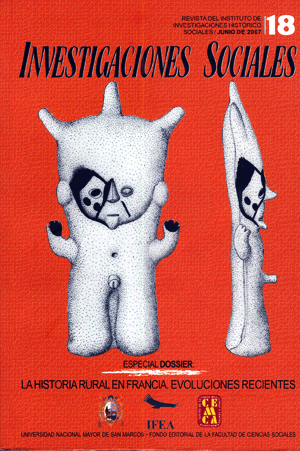Jaguar e ideología en las sociedades del Período Formativo: Pacopampa un caso en los Andes centrales
DOI:
https://doi.org/10.15381/is.v11i18.7140Keywords:
Pacopampa, Andean world, archaeology, iconography, mythology.Abstract
In the Peruvian Central Andean Range the material culture of societies of the Formative Period (1500 to 400 B.C.) include anthropomorphic jaguars in their iconography. Archaeological diggings in the Pacopampa site have unearthed the iconographic representation of anthropomorphic jaguars as recurrent elements in pottery with incisions. This character would be linked to the idea of the Jaguar God, that in our opinion, represents the supernatural powers that control natural phenomena during the various seasons. The jaguar icons in Pacopampa evolve from the animal natural figure and become anthropomorphic figures in a process that based on ethnographic data is interpreted as the transformation of shaman into jaguar, its most eloquent image in the Andean world being the Raimondi Stele of Chavin. According to Julio C. Tello this image continued to evolve to become the Wiracocha god of the Incas.Downloads
Published
Issue
Section
License
Copyright (c) 2007 Daniel Morales Chocano

This work is licensed under a Creative Commons Attribution-NonCommercial-ShareAlike 4.0 International License.
AUTHORS RETAIN THEIR RIGHTS:
a. Authors retain their trade mark rights and patent, and also on any process or procedure described in the article.
b. Authors retain their right to share, copy, distribute, perform and publicly communicate their article (eg, to place their article in an institutional repository or publish it in a book), with an acknowledgment of its initial publication in Investigaciones Sociales.
c. Authors retain theirs right to make a subsequent publication of their work, to use the article or any part thereof (eg a compilation of his papers, lecture notes, thesis, or a book), always indicating the source of publication (the originator of the work, journal, volume, number and date).













